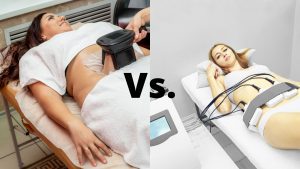Is Cavitation An Affective Technique To Eliminate Localized Fat?
What is cavitation?
Cavitation is a non-invasive procedure that has gained popularity in the beauty and aesthetic field. This customized treatment focuses on reducing localized fat in specific areas of the body. Cavitation is performed using a high-frequency ultrasound device that emits sound waves capable of penetrating the skin and reaching the subcutaneous fat layer. These sound waves produce vacuum bubbles that implode and break up the fat cells.
This treatment can be applied to different areas of the body, such as the abdomen, thighs, hips, arms and back. Unlike traditional liposuction, cavitation does not require surgery or anesthesia, making it a safer and less painful option.
Is cavitation an effective treatment for general weight loss?
Do you want to remove fat without surgery?
¡Diga adiós a la rebelde grasa con criolipólisis en Chicago ! Confíe en nuestra clínica de Chicago CoolSculpting para tratamientos de reducción de grasa seguros y efectivos. Si hay algún coolculpting cerca de mí , llame al 312-841-9750.
Call us atClick NowIt is important to note that cavitation is not a solution for generalized weight loss, but is recommended for people with localized fat in specific areas who have tried other alternatives, such as dietary changes and exercise, without success. It is necessary to keep in mind that the results of cavitation vary according to body type and the amount of fat in the treated area.
It is a quick and simple procedure that can be performed in a forty minute session. No recovery time is required after the session, so patients can return to their daily activities immediately. However, to maintain the results obtained it is recommended to eat a healthy diet and exercise regularly.


Who cannot undergo the treatment
Before undergoing any aesthetic treatment, it is important to consult with a medical professional. Cavitation is not recommended for people with generalized obesity, health problems such as liver or kidney disease, pregnant or lactating women, people with implanted medical devices such as pacemakers, as well as those with blood clotting problems or who are taking anticoagulants.
Fighting stubborn fat?
Descubra el mejor coolsculpting en Chicago y obtenga la figura que desea, confíe en nosotros para obtener el mejor coolsculpting en chicago con ofertas de coolsculpting en chicago .
Call us atClick NowWhat effects can this treatment have?
The usual side effects of cavitation are temporary redness, swelling, bruising and tenderness in the treated area. Tingling or numbness may also occur. Risks include the possibility of burns, blistering and scarring. It is essential that the treatment be performed by a trained and experienced professional to reduce these risks and side effects.










